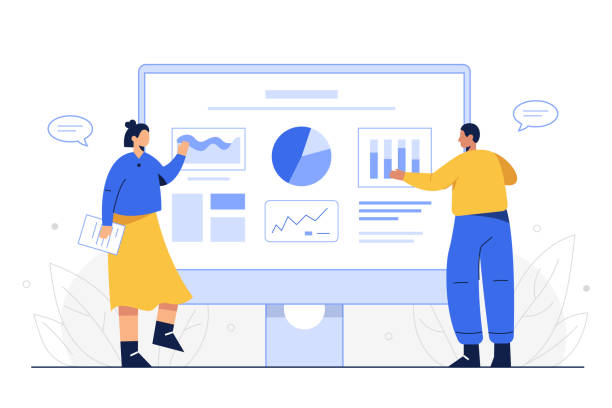Introduction to the Expansive World of Multilingual Website Design

In today’s world, where geographical boundaries have blurred in the virtual space, the #globalmarket is accessible to every business.
To fully leverage this immense potential and reach #newaudiences, multilingual website design is no longer a luxury option, but a strategic necessity for #businessgrowth.
This approach allows you to convey your message in the native language of users in different parts of the world, which in itself means creating deeper connections and increasing trust.
A single-language website, no matter how high-quality its content, covers only a small fraction of internet users.
This explanatory content helps you gain a better understanding of this concept.
In fact, many studies have shown that users prefer to make purchases or online interactions on websites available in their own language.
This not only helps increase conversion rates but also significantly improves user experience.
Therefore, the importance of multilingual website design goes beyond mere content translation; it means complete localization of the user experience for international audiences.
Are you tired of your e-commerce site having visitors but no sales? Rasaweb solves your main problem with professional e-commerce website design!
✅ Significant sales increase with targeted design
✅ Flawless user experience for your customers
⚡ Get a free consultation!
Numerous Benefits of Multilingual Websites in Attracting Audiences

Building a multilingual website offers numerous analytical and commercial benefits that go beyond expectations.
One of the most important of these benefits is expanding your website’s reach to new and diverse markets.
By providing content in different languages, you will be able to attract audiences that were previously inaccessible due to language barriers.
This means increased organic traffic and improved search engine rankings for various keywords in multiple languages.
For example, if your business offers global products, a multilingual website helps you gain more visibility in your target countries.
Furthermore, multilingual websites help increase user credibility and trust.
When a user sees content in their native language, they feel more comfortable and confident about the brand.
This is particularly important in e-commerce, as trust directly leads to purchasing decisions.
A multilingual website also helps improve the user experience (UX), as users will not need to rely on automatic translation tools, which often lack accuracy and may cause misunderstandings.
Ultimately, multilingual website design gives you a significant competitive advantage in the global market and paves the way for sustainable growth.
Essential Steps Before Starting a Multilingual Website Design

Before starting the multilingual website design process, meticulous planning and attention to detail are of paramount importance.
This stage involves key decisions that directly impact the project’s ultimate success.
The first step is to precisely identify the target languages.
You need to analyze which countries and geographical regions hold the most potential for your business and which languages their users speak.
This decision should be based on analytical data, not just guesswork.
Furthermore, you must consider the cultural differences of each region; simply translating words is not enough; content localization, images, and even colors are required to attract specialized content audiences.
Should your content be adapted for different cultures? Do you need to translate specific and technical terms? These are questions whose answers provide valuable guidance.
The URL structure is also very important.
Choosing between subdomains (e.g., fr.yourdomain.com), subdirectories (yourdomain.com/fr), or country-specific top-level domains (yourdomain.fr) requires careful consideration from an SEO and management perspective.
Next, we examine common URL structure options for multilingual website design:
| Structure Type | Example | Advantages | Disadvantages |
|---|---|---|---|
| Subdirectory | yourdomain.com/fa/ | Ease of management, shares main domain authority | Complexity in precise geographical targeting |
| Subdomain | fa.yourdomain.com | Separate authority for each language, suitable for different hosting | More complex management, requires building authority from scratch for each subdomain |
| Country Code Top-Level Domains (ccTLD) | yourdomain.ir | Best for local SEO, highest user trust | Highest cost and management complexity, requires separate hosting |
Technical Aspects and Implementation of Multilingual Website Design
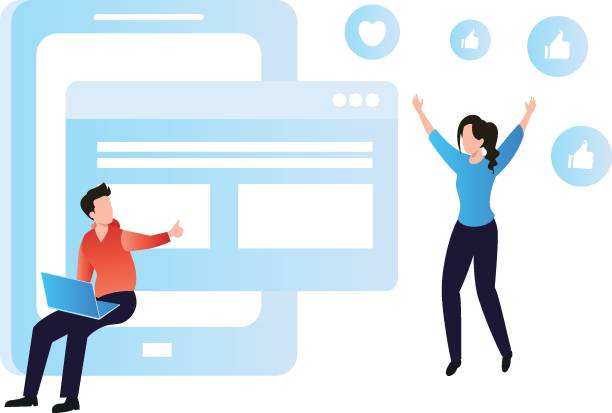
Once the initial decisions for multilingual website design have been made, it’s time for the technical and implementation aspects, which are crucial for ultimate success.
One of the most important elements is the correct use of hreflang tags.
These tags inform search engines like Google that different versions of a page are available for specific languages or regions, which greatly helps in displaying the correct pages in search results.
Implementing these tags requires high precision to prevent SEO errors.
Choosing the right Content Management System (CMS) is also very important.
Platforms such as WordPress with plugins like WPML or Polylang, or systems like Drupal and Joomla, offer advanced multilingual capabilities.
It is important that your chosen CMS allows for easy management of translations, adding new languages, and updating content.
Also, attention must be paid to the storage system for translated content; is the content stored in a shared database or is a separate database created for each language? These technical decisions will directly impact the efficiency and scalability of your website and require consultation with technical specialists.
Ensuring page loading speed in every language and for every geographical region is also important, so suitable hosting and a Content Delivery Network (CDN) are essential for improving global performance.
Did you know that poor online store design can drive away up to 70% of your potential customers? Rasaweb transforms your sales with professional and user-friendly e-commerce website design.
✅ Significant increase in sales and revenue
✅ Full optimization for search engines and mobile
⚡ [Get a free consultation from Rasaweb] Now!
Challenges of Content Translation and Localization in Multilingual Websites

The process of content translation and localization in multilingual website design goes beyond mere word replacement and presents its own unique challenges.
Solely relying on machine translation tools often results in low-quality and unnatural texts that not only fail to gain user trust but may also harm brand credibility.
For specialized content, professional and native translators are required who are not only fluent in the target language but also fully familiar with the specific culture and idioms of that region.
Localization includes adapting currency, date and time formats, addresses, phone numbers, and even images that may have different meanings in various cultures.
“Questionable content” refers to whether this content is understandable and appropriate for all international audiences. Are there sections that might cause misunderstandings or disregard cultural sensitivities? Translation quality control is also very important.
There must be precise review processes to ensure the accuracy, fluency, and naturalness of translations.
This stage often involves feedback from native users or language specialists to ensure the main message is correctly conveyed.
Investing in high-quality translation and localization is an investment in the long-term success of your multilingual website.
The Importance of User Experience (UX) in Multilingual Website Design

User Experience (UX) plays a vital role in the success of a multilingual website.
Even with the best translations and localized content, if a user cannot easily find and select their desired language or encounters an unfamiliar user interface, the website will not be successful.
One of the key elements in this regard is designing a clear and accessible language switcher.
This switcher should be placed in a prominent and logical location, usually in the website’s header or footer.
Using country flags for language selection is not recommended, as one language may be spoken in several countries (like Spanish) or a country may have multiple official languages (like Canada).
It is better to use the language name as text (e.g., “English”, “Persian”).
Furthermore, it must be ensured that the website’s responsive design works correctly in all languages and that texts do not disrupt the layout after translation.
Multilingual website design requires attention to visual and functional details in each language version.
The user experience should be consistent and optimized across all languages, even if the text direction (right-to-left or left-to-right) changes.
Continuous review and testing with real users from different regions can also help identify weaknesses and improve user experience, making the website more user-friendly.
International SEO Strategies for Multilingual Websites
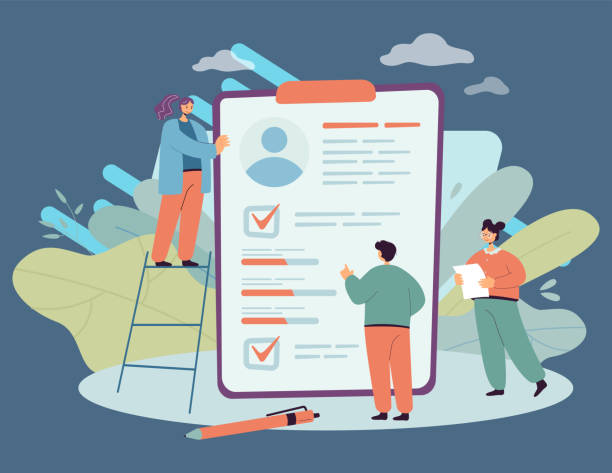
SEO for multilingual websites has its own complexities that must be carefully considered for successful performance in global search engines.
This section provides specialized guidance for optimizing your website for international searchers.
The first step is keyword research in each target language.
Common keywords in one language may have different meanings or popularity in another, so simple keyword translation is not enough and requires local and native research.
Correct use of hreflang tags, mentioned earlier, is crucial for directing appropriate traffic to the correct language version of the website.
These tags help search engines avoid detecting duplicate content and show the correct version to users.
Additionally, creating separate XML sitemaps for each language and submitting them to Google Search Console can help search bots crawl pages more effectively.
Link-building strategy should also be developed separately for each language and region.
Acquiring backlinks from reputable and relevant websites in each country can increase your website’s authority in that region.
Next, we compare some key SEO factors in multilingual and single-language websites:
| SEO Factor | Single-Language Website | Multilingual Website |
|---|---|---|
| Keyword Research | Focus on one language | Requires separate research for each language and region |
| URL Structure | Simple and unified | Requires subdirectory, subdomain, or ccTLD strategy |
| Hreflang Tags | Irrelevant | Essential for identifying language versions |
| Link Building | National or regional | Requires local strategy for each language/country |
| XML Sitemap | Usually one sitemap | Separate sitemaps recommended for each language |
Common Mistakes in Multilingual Website Design and Avoidance Strategies
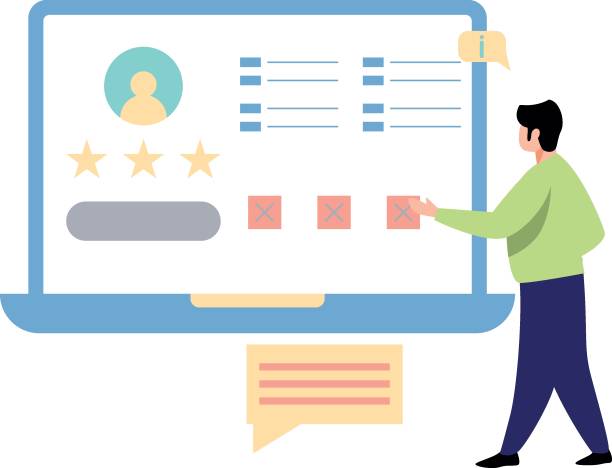
On the path of multilingual website design, there are common mistakes that can be costly and hinder success.
Understanding these mistakes and finding solutions to avoid them is crucial.
One of the biggest mistakes is over-reliance on machine translation without human review.
As previously mentioned, machine translation often lacks the necessary accuracy and cultural understanding, which can lead to misunderstandings or even unintentional offense.
The solution is to always use native and professional translators and implement thorough review processes.
Another mistake is neglecting international SEO.
Some developers focus only on content translation and overlook the importance of hreflang tags, appropriate URL structure, and native keyword research.
This can lead to a decline in the website’s ranking in global search engines.
To prevent this problem, integrate a strong international SEO strategy into the design and development process from the outset.
Not providing a clear and accessible language switcher is also a common user experience mistake.
Users should be able to easily and quickly select their desired language.
Finally, neglecting continuous maintenance and updates of multilingual websites can lead to performance issues.
Educational content and continuous maintenance will ensure the smooth operation of the website in all languages.
Are your online sales not what you expected? With Rasaweb, permanently solve the problem of low sales and poor user experience!
✅ Increase visitor-to-customer conversion rate
✅ Create an enjoyable user experience and increase customer trust
⚡ Act now to receive a free consultation!
The Future of Multilingual Website Design and Emerging Trends
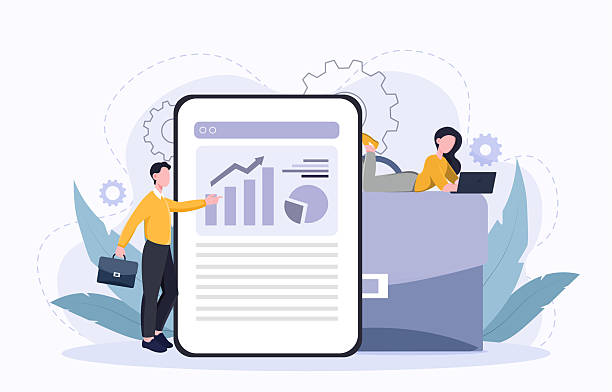
The future of multilingual website design is being transformed by news trends and emerging technologies.
One of the most important of these trends is the significant advancements in Artificial Intelligence (AI) and Machine Learning (ML), which are increasingly being used to improve the quality of machine translation and automated localization.
Although human translation remains essential, AI-powered tools can act as powerful complements and accelerate the process.
These technologies can help translate vast amounts of content and lead to faster deployment and updates of multilingual websites.
We are also witnessing an increase in the use of multilingual chatbots and voice assistants that further personalize the user experience, allowing users to interact with the website in their preferred language.
These tools can answer user questions in an entertaining and interactive way.
Increased focus on voice SEO and multilingual video content is another important trend.
Websites that can provide their content in audio and video formats with subtitles or dubbing in different languages will have a significant advantage.
Analyzing international user data has also gained increasing importance for continuous optimization of content and marketing strategies on multilingual websites.
Case Study of Multilingual Website Design Success
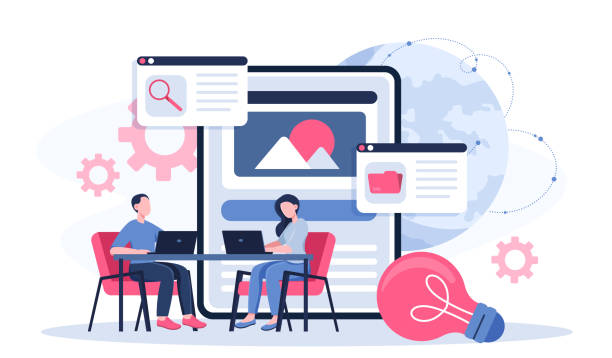
To better understand the importance and impact of multilingual website design, a case study of successful businesses can be very insightful.
Large companies like Airbnb, Spotify, and IKEA are prime examples of organizations that have achieved global success by investing extensively in multilingual websites and comprehensive localization.
Airbnb, as an accommodation rental platform, serves users from all over the world.
This company has not only translated its website into dozens of languages but also actively works on localizing images, phrases, and even payment methods for each region.
This level of localization allows users to feel that the platform is specifically designed for them, which in turn leads to increased trust and booking rates.
Spotify, the music streaming platform, also provides its content (including the user interface and artist descriptions) in various languages, which has helped it rapidly penetrate international markets.
IKEA, the furniture retail giant, has also facilitated the shopping experience for its customers worldwide by providing localized product catalogs and websites in different countries.
These examples demonstrate that a successful multilingual website, beyond simple text translation, requires a comprehensive localization strategy, attention to cultural details, and a commitment to providing an unparalleled user experience for all global audiences.
Frequently Asked Questions (FAQs)
| Question | Answer |
|---|---|
| What is multilingual website design? | The process of building a website whose content is available to users in more than one language. |
| Why should I make my site multilingual? | To reach a wider global audience, improve user experience for non-native speakers, and increase sales or engagement. |
| What are the methods for implementing a multilingual site? | Using subdomains, subdirectories, or URL parameters, or using different Top-Level Domains (TLDs) for each language. |
| Which method is better for SEO? | Generally, using subdirectories (e.g., example.com/fa/) is recommended for SEO, as they share the main domain’s authority. |
| What is the hreflang tag and what is its use? | The hreflang tag is an HTML attribute that helps search engines understand which version of a page is suitable for a specific language or region. |
| Is machine translation sufficient for multilingual site content? | Usually not. For a good user experience and to maintain credibility, professional translation and content localization are essential. |
| What does Localization mean? | The process of adapting the website’s content, design, and functionality to the culture, language, currency, and other specific characteristics of a target region or country. |
| What is the importance of language selection in multilingual website design? | Users should be allowed to easily choose their desired language, usually through a clear button or menu in the site’s header. |
| What challenges exist in multilingual website design? | Managing content in different languages, maintaining consistency in design and user experience, multilingual SEO, and translation and maintenance costs. |
| What features should a suitable Content Management System (CMS) for a multilingual site have? | It should allow for easy content management in different languages, support multilingual URL structures, and have relevant translation and localization plugins. |
And other services of Rasaweb Advertising Agency in the field of advertising
Smart Data Analysis: A professional solution to improve SEO ranking with a focus on intelligent data analysis.
Smart Data Analysis: A fast and efficient solution to increase click-through rates with a focus on marketing automation.
Smart Google Ads: A professional solution to increase website visits with a focus on optimizing key pages.
Smart Marketing Automation: Designed for businesses looking for user engagement through intelligent data analysis.
Smart Custom Software: Transform online growth by optimizing key pages.
And over hundreds of other services in the field of internet advertising, advertising consultation, and organizational solutions
Internet Advertising | Advertising Strategy | Advertorial
Resources
Multilingual Website Design
Multilingual Website Design
Importance of Multilingual Website Design
Multilingual Website Design
? Ready to leap your business forward in the digital world? Experience a bright future with Rasaweb Afarin Digital Marketing Agency, specializing in secure website design and comprehensive online marketing strategies.
📍 Tehran, Mirdamad St., next to Central Bank, Southern Kazeroun Alley, Ramin Alley, No. 6

